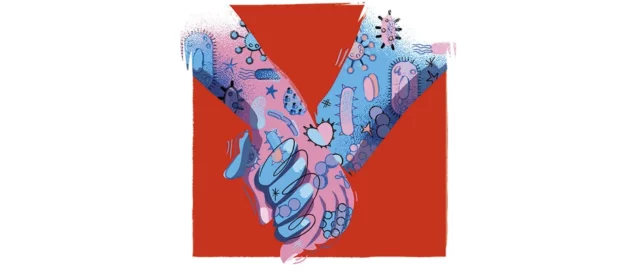By Barış Özdinç
Dr. Michael Mosley from the BBC’s Science Focus Magazine brings a new perspective to an age-old topic – why do long-term couples tend to look alike? Is it because long-term couples tend to choose their look-alikes as their partners, or is it due to shared diets, lifestyles, mannerisms, or other factors? To answer this question, a Stanford University research group took advantage of an advanced facial recognition software to assess a database of pictures of 517 couples soon after getting married and then decades later. The findings illustrate that long-term couples tend to look alike because we tend to choose partners who look similar to ourselves, not because we become more similar with age. Despite this finding, a study from University of Waterloo highlights that our skin microbiome does evolve to be more like our partners’ over the years. The study collected skin microbiome samples from multiple body sites of cohabiting couples and then used computer algorithms to predict which couples are cohabiting based on their skin microbiota. The Algorithm identified cohabiting couples with 86% accuracy based on their skin microbiomes alone, underlining the significant impact of cohabitation on skin microbiome composiiton. Perhaps skin microbiome similarity has some role in skin appearance similarity in couples. Despite the significant impact of cohabitation on skin microbiome, there were some body parts where gender played a more significant role than cohabitation on skin microbiome composition. Strikingly, computer algorithms were able to differentiate between male and female with 100% accuracy by analyzing inner thigh skin microbiome samples.


